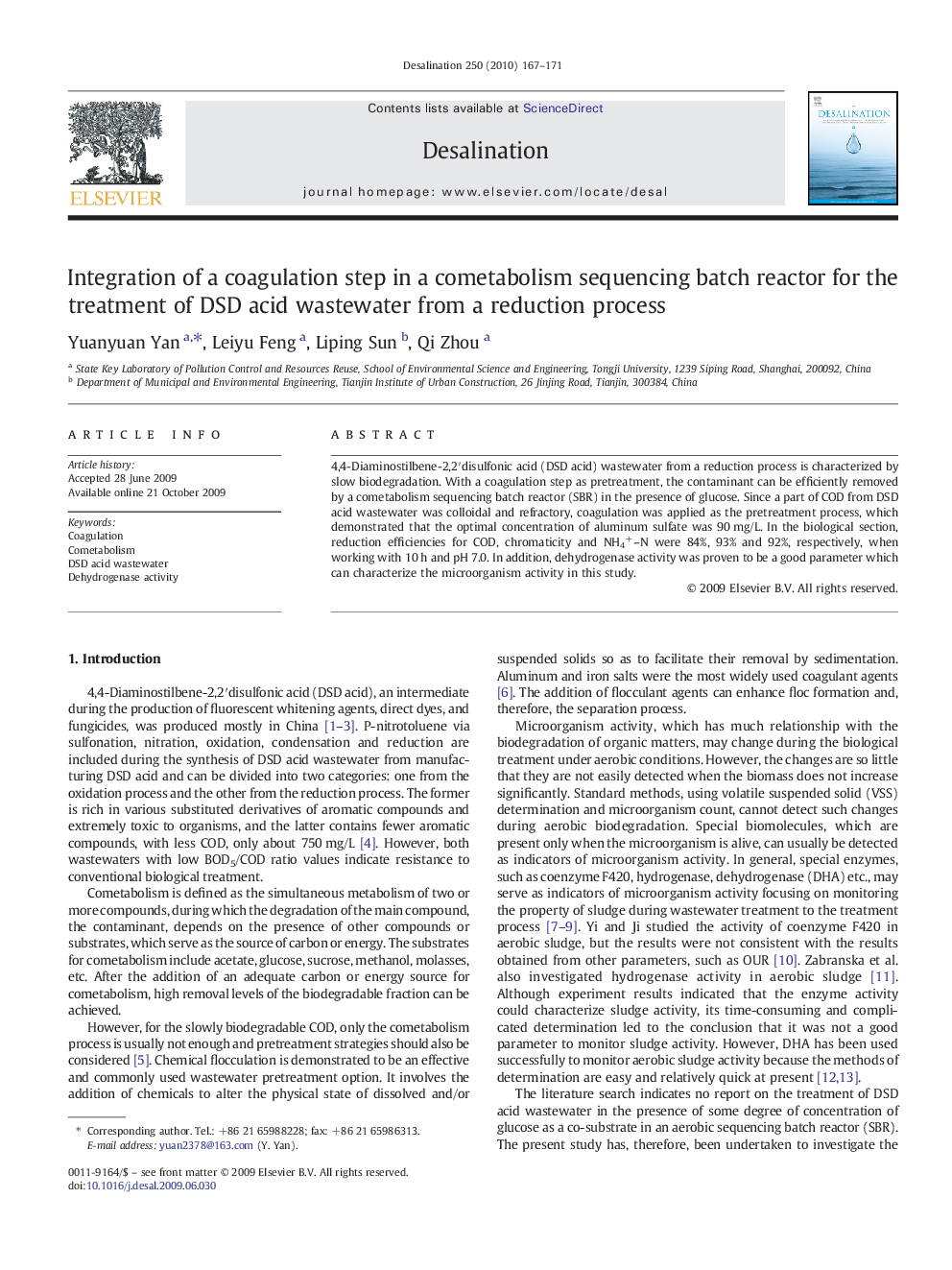| Article ID | Journal | Published Year | Pages | File Type |
|---|---|---|---|---|
| 10386125 | Desalination | 2010 | 5 Pages |
Abstract
4,4-Diaminostilbene-2,2â²disulfonic acid (DSD acid) wastewater from a reduction process is characterized by slow biodegradation. With a coagulation step as pretreatment, the contaminant can be efficiently removed by a cometabolism sequencing batch reactor (SBR) in the presence of glucose. Since a part of COD from DSD acid wastewater was colloidal and refractory, coagulation was applied as the pretreatment process, which demonstrated that the optimal concentration of aluminum sulfate was 90Â mg/L. In the biological section, reduction efficiencies for COD, chromaticity and NH4+-N were 84%, 93% and 92%, respectively, when working with 10Â h and pH 7.0. In addition, dehydrogenase activity was proven to be a good parameter which can characterize the microorganism activity in this study.
Related Topics
Physical Sciences and Engineering
Chemical Engineering
Filtration and Separation
Authors
Yuanyuan Yan, Leiyu Feng, Liping Sun, Qi Zhou,
